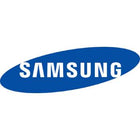Lenovo
Looking for RAM Memory and SSD upgrades for your Lenovo computer?They are all here on this one page. All the RAM Memory, SSDs and accessories needed to upgrade your Lenovo notebook, desktop or workstation. Utilise the dropdown boxes to find the correct RAM memory and SSD upgrades for your Lenovo B, C, E, G, H, V, Z series notebook, Lenovo H and S series desktop, IdeaCentre, IdeaPad, ThinkCentre, Thinkpad, ThinkServer, ThinkStation, Yoga and X1 carbon .
You can call, chat or email our upgrade team at anytime, we love helping people choose the right upgrade to extend the life of their computer.
Money back guarantee for 100% compatibility. No questions asked refund policy. Lifetime warranty on RAM Memory, five years on SSDs. Local technical staff available to assist you at any time.
Welcome to the Upgradeable Lenovo model page. You can quickly search our database and find your model and what upgrades you can buy to improve its performance.
Start by clicking on the "find your model series" box. A drop down list of models should appear.
Choose what series your computer belongs to. Step 2 is clicking in the next box "Select a Model" and all the models in that series will appear. Scroll to choose your model.
When you find your model, selecting it will make all the upgrade options appear.
If you have any problems, please contact us via our online contact form or call our office. We appreciate all feedback, it helps improve our service.
Then you should consider replacing your existing HDD with an SSD(solid state drive)
Upgrading the memory in your computer is usually the first step to increasing it's performance. Additional memory allows you to run more applications simultaneously without the computer slowing down. It also allows you to multi-task to a much greater degree as your applications, email, web browsing, etc. all have more RAM to use to run efficiently.
However additional RAM does not solve all the issues of a "slow" computer. If you find that it takes Windows a long time to load or your spreadsheets are taking minutes before they are ready to use, then you should consider swapping out your old spinning HDD for an SSD.
SSDs will run up to 12 times faster then a HDD and will have Windows loading and ready to use within seconds instead of minutes. All complex programs, high res video, complex audio and other large applications will load, ready to use, within seconds instead of taking several minutes before being ready to utilise.
In a working environment, waiting minutes each time a new program loads or for your computer to be ready to use is a time consuming and costly exercise. Added up, wait times increase to hours lost when totaled over the course of just a week.
This would rank as one of our most frequently asked questions.
The short answer is yes, but only if you have a notebook or desktop.
A large majority of notebooks have 2 memory slots which can be upgraded with either one of two modules. Many of these are shipped with 2 low-density modules of matching capacity.
However when upgrading these types of notebooks you do not have to remove both modules and put in a matching pair. It is just as effective to keep 1 of the existing modules and replace the other one with a large capacity module.
Most desktops have a similar set up. They generally have 2 or 4 memory slots that are upgradeable. Many times they are shipped with a matching pair. However when upgrading you need only to add one module at a time regardless whether the device was shipped with 1 module or 2 originally. Your HP desktop will run quite happily with 3 modules assuming it has 4 or more memory slots.
This is by far the most frequently asked question we field on a daily basis.
The answer is always, "what is the exact model of your Lenovo"
Unfortunately there is no other way to determine the answer to that question without knowing the exact details of your computer.
Over ten years ago, 4gb was maximum for most notebooks and desktops. 8 years ago, the max was mostly around 8gb for notebooks and maybe 16gb for desktops. 6 years ago, generally most laptops could take 16gb and many desktops could take 32gb.
Now with DDR4 RAM, many notebooks take 32gb and many desktops take 64gb.
However those are very rough guidelines as you would need to exclude servers, ultrabooks and other devices from these generic guestimations.
So getting back to our original answer, the only way to receive the correct advice is to be sure to have your exact model available.
There are multiple ways you can identify how many memory slots your Lenovo Computer has:
1. Physically looking.
2. Using the memory scanner tool supplied on our website.
3. The instruction manual that came with the computer should also tell you.
4. Use our website to find your model. We have ram slot info on every model page.



